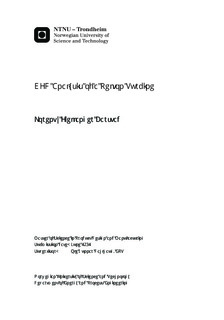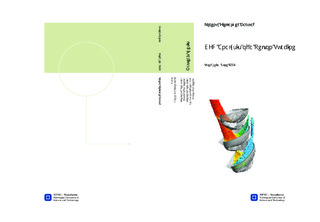| dc.contributor.advisor | Dahlhaug, Ole Gunnar | nb_NO |
| dc.contributor.author | Barstad, Lorentz Fjellanger | nb_NO |
| dc.date.accessioned | 2014-12-19T11:48:49Z | |
| dc.date.available | 2014-12-19T11:48:49Z | |
| dc.date.created | 2012-11-08 | nb_NO |
| dc.date.issued | 2012 | nb_NO |
| dc.identifier | 566112 | nb_NO |
| dc.identifier | ntnudaim:8168 | nb_NO |
| dc.identifier.uri | http://hdl.handle.net/11250/234770 | |
| dc.description.abstract | A Pelton design software is currently being developed at the Waterpower laboratory at NTNU. The motivation behind this software is to streamline the parametric design process for Pelton turbines. A numerical flow model is a cornerstone in this application, but the lack of a bucket geometry and model runner has prevented the development of such a model. DynaVec, a turbine producer who specializes on sediment erosion and corrosion problems, offered to help by providing a bucket geometry and a model runner.The objective of this Master's thesis was to develop and validate a CFD model that predicts the torque applied to a non-stationary Pelton bucket, subject to a high-speed water jet. The numerical model was based on a method proposed by DynaVec, and the bucket geometry used in the simulations was identical (1:1) to the model runner.Numerous simulations were conducted, testing mesh dependency and different operational points (e.g. head). Mesh independence occurred at approximately 4.5 million elements. Furthermore, simulations of varying heads showed that the model may be independent of the head (40-80m), but this was not verified properly.Experiments showed that the numerical prediction was fairly accurate. A comparison of the numerical and experimental measurements showed that the CFD model over-predicts the torque by approximately 1.5%. This prediction was validated for the specific geometry used in the simulations, and a head of 75m.Overall, the results suggest that the numerical model is promising as a parametric design tool, but further development is required to obtain a true validation of the model.Task three and four were changed in agreement with Ole Gunnar Dahlhaug, because Solemslie's design program was delayed. In essence, the parametric study proceeded in favor of the development of a CFD model. To ensure that this work would benefit future research, especially students at the Waterpower laboratory, a detailed procedure for the CAD modeling, meshing and physical setup was included in the Appendix. | nb_NO |
| dc.language | eng | nb_NO |
| dc.publisher | Institutt for energi- og prosessteknikk | nb_NO |
| dc.subject | ntnudaim:8168 | no_NO |
| dc.subject | MTPROD produktutvikling og produksjon | no_NO |
| dc.subject | Energi-, prosess- og strømningsteknikk | no_NO |
| dc.title | CFD Analysis of a Pelton Turbine | nb_NO |
| dc.type | Master thesis | nb_NO |
| dc.source.pagenumber | 106 | nb_NO |
| dc.contributor.department | Norges teknisk-naturvitenskapelige universitet, Fakultet for ingeniørvitenskap og teknologi, Institutt for energi- og prosessteknikk | nb_NO |

